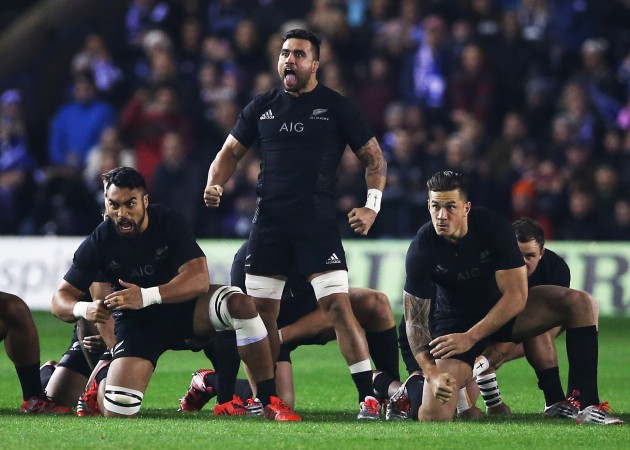It would be a gentle understatement to say that Graham Henry is a deadpan fella. So when the World Cup-winning Kiwi coach tells you that he has gotten emotional watching the haka, you listen that little harder for a crack in his voice.
“There are times people never see it coming and for me it was when I finished,” Henry tells Rugby World when asked if any performances of the All Blacks‘ traditional challenge stand out for him. “I didn’t say I was retiring, after we’d won the World Cup, but I’d coached about 103 Tests. We went on a parade after we’d won and were heading for a parliamentary reception. There the players did a haka for me on the steps of the building. That’s emotional.
“I also remember recently that (Dan) Carter played 100 Tests and again the players haka’d Daniel and his father in the changing room. It is almost impossible to hold yourself together.”
You’ve all seen the haka. Just before kick off the All Blacks spread out in front of their opponents for the day, breathing hard, launching into a rhythmic and loud performance of a war dance daring the players opposite to throw their best at the team. Henry believes strongly in the sanctity of this pre-match routine, despite some protestations in the northern hemisphere that it gives the All Blacks an unfair advantage. He feels it is something to be protected.
So when it is put to him that he ran a big risk himself, in overseeing the introduction of a new haka to be used instead of the traditional Ka Mate dance – remember that New Zealand is a country where fans were almost inconsolable when the All Blacks’ socks changed to incorporate three white stripes instead of two – he cannot help but let out a dry chuckle.
“Well it was done very sensitively,” he says. “You need to remember that New Zealand is a society that has changed. We have the biggest Pacific Island population in the world, and you can see that in the All Blacks’ team makeup. So the team of the last decade have developed the Kapa o Pango which represents modern New Zealand with its Maori, Pacific nations – Tongan, Samoan and Fijian – and European heritage. We felt it was a great representation of the unity of the group.”
Henry fills us in on the ins-and-outs of learning the haka and who leads it.
“When the team first get together as the All Blacks for the season, before the June Tests, they group will spend a bit of time brushing up. Then before the Rugby World Cup, the team might have a day where they’ll have their haka tutor back to look at particular bits of it. Someone like Richie McCaw will obviously have a good grasp of it by now! But some of the new guys will need a bit of help. Then the leadership group of seven players will decide who leads the haka and which haka the team will do before a certain game. They’ll have breakfast together and make the decision.
“There are a number of potential leaders. There’s obviously Richie. Liam Messam has done it. Tana Umaga was great when he was captain and Piri Weepu led it for a number of years. The decision is based on who the boys show a lot of respect to and then the public see it – it needs to be done well and that is a huge responsibility. So Keven Mealamu is like the godfather of this current squad and you saw him recently lead the haka against the Wallabies.”
Graham Henry was speaking on behalf of AIG, the official insurance partner of New Zealand rugby. AIG is bringing fans closer to the All Blacks’ haka than ever before. Take the challenge at AIG.com/Haka360







